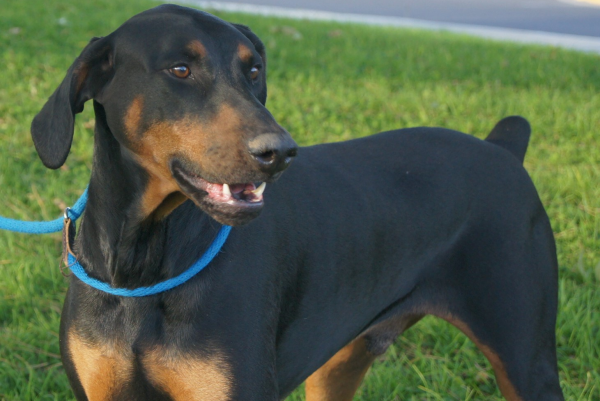Breed History and Standards
History
There are no records but only speculation as to which dogs went into the creation of the original Doberman. It is documented that crosses were made to two of the English breeds around the turn of the century, using the Black and Tan Manchester Terrier and the black English Greyhound in order to improve the Doberman’s appearance. It is generally accepted as fact that the two German breeds which played a major role in the Doberman’s ancestry were the old German Shepherd (now extinct) and the German Pinscher — the ancestors of the Rottweiler and the Weimaraner. The old German Shepherd contributed to ruggedness, intelligence and physical and mental soundness, with the Pinscher adding the terrier fire and quick reaction time. The Weimaraner gave the Doberman its hunting, retrieving and scenting capabilities, for the Weimar Pointer, as it was called, was an all-purpose hunting dog. However, it was the Rottweiler that the early Doberman strongly resembled and to which the breed owes so much of its substance, bravery and reliable guarding ability.
Standards
 Dobermans come in four colors: The classic black and tan, the red, the blue, and the fawn. Dobermans generally weigh between 65 and 80 pounds and stand 24″ to 28″ at the shoulders, with females being the smaller size.
Dobermans come in four colors: The classic black and tan, the red, the blue, and the fawn. Dobermans generally weigh between 65 and 80 pounds and stand 24″ to 28″ at the shoulders, with females being the smaller size.
Doberman tails are usually docked when puppies are approximately four days old. Doberman ears can be cropped (by three months of age) or left natural. There is no benefit to the dog whatsoever from this practice, it is purely aesthetic. In Europe it is illegal to dock or crop Dobermans.
